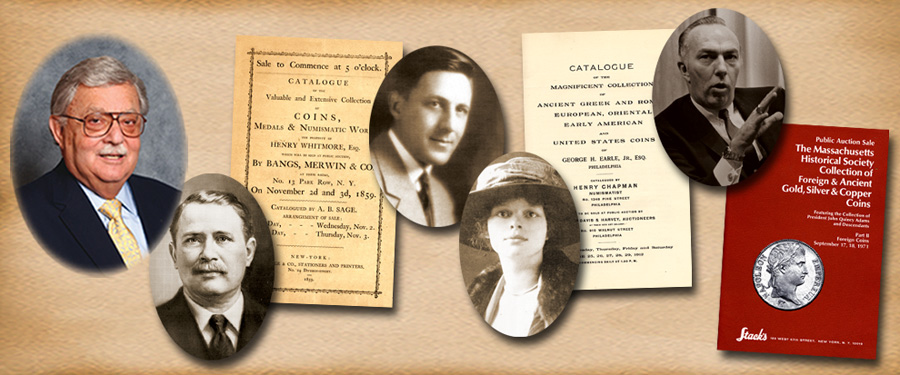
Last time I mentioned the collection of the Adams family of Massachusetts. By the early l830s the members of the family had accumulated thousands upon thousands of documents, showing history and events from our early colonial days, through the War of Independence and the early days of the Industrial Revolution in the 1830s.
A depository was established in the recently endowed Massachusetts Historical Society. Many documents, books, coins and currency were placed there for those who wished to study and learn more about the development of the United States of America. The massive collection of coins was given to the Society by John Quincy Adams, along with letters, documents and notes saved from earlier days. The coin collection was carefully housed in large wooden library type cabinets, fitted with drawers to accommodate the extensive collection. The collection included American coins and currency, from pre-colonial days up to about the time of John Quincy Adams, as well as foreign pieces. The collection itself revealed a lot about the economic development of America and reflected the world coins that were available to the members of the Adams family.
For many decades the collection resided in the care of the Society and was available for collectors to examine and scholars to study. However, there was no special curator and the care of the coins was not always well attended to. In order to limit the coins’ exposure to various elements, it was decided to store the collection in the Boston Museum of Fine Arts, (currently know as The Museum of Fine Arts or MFA).
The cases and cabinets were stored in a vault type area in the museum, along with other artifacts that the museum had accumulated from expositions about the classical world, paintings that were of lesser interest than those on display and items that were constantly under study, including several unopened sarcophaguses from Egypt, Greece and other places of the ancient world.
In the mid 1960s it was discovered that funds were needed to preserve and restore many of the rare history related documents from the Adams Family and other sources. The cost for the project was immense, so the curators of the MFA, under the leadership of Cornelius Vermuele (a senior curator of Antiquities and Numismatic items), recommended that since the coins are rarely if ever seen, they be sold to provide the funds to preserve the important papers of early America.
Stack’s, the most qualified numismatic house in America, with their staff with experience writing catalogs for both American and world coins, was chosen to make sure that the coins were carefully cataloged and recorded. Many were to be photographed.
In my next article I will discuss how Stack’s brought the Adams family coins to auction, carefully preserving this important and valuable pedigree.





